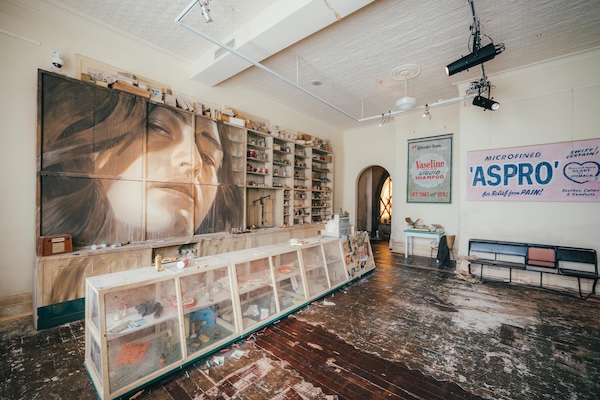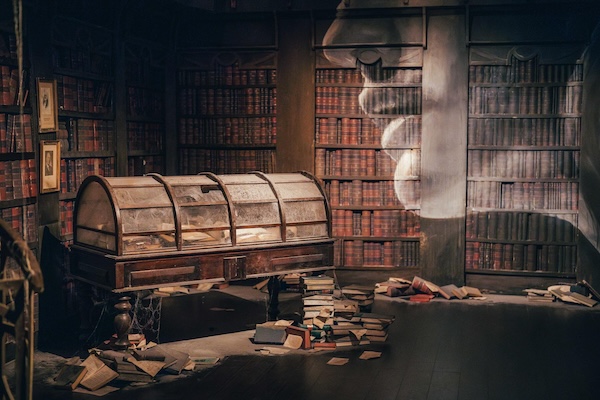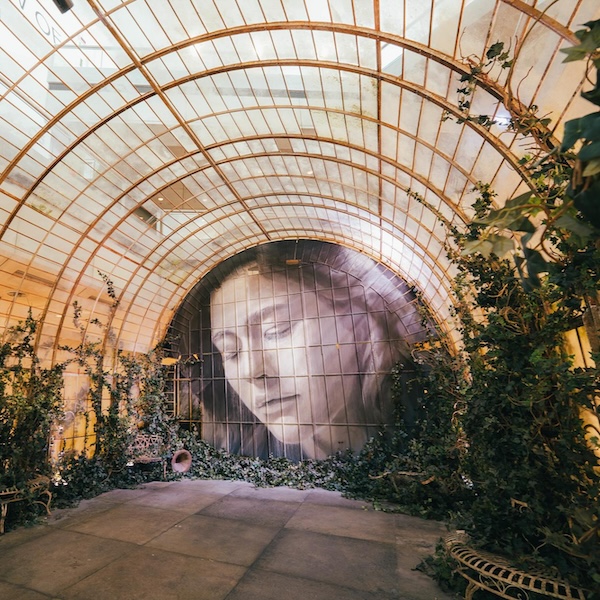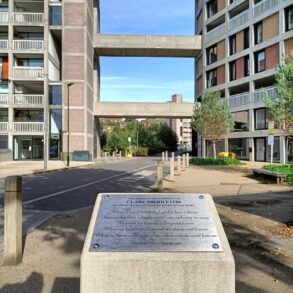
© RONE 2024
Renowned Australian street artist, Rone, unveils his first major exhibition at the Art Gallery of Western Australia (AGWA). Titled TIME • RONE, this immersive experience brings visitors back to a forgotten era of Australian history.
Rone’s signature large-scale murals of women span across 12 rooms of the Centenary Galleries, which makes it the first time in nearly 20 years that the galleries are fully open to the public. Inviting visitors to explore themes of beauty, decay, and the search for meaning in everyday moments, Rone’s work is further heightened by stylist Carly Spooner and composer Nick Batterham as the spaces spring to life with a haunting soundscape and installations.
We queried Rone about his exhibition, the woman behind his work, and the attraction of impermanence.
ESQUIRE: What goes into your process of the type of woman that goes with the kind of wall/environment? How do you settle on the location and subject?
Rone: Everything really depends on the location, if it’s a public wall, I will try and paint someone local or representative of the area, as this seems to create the best engagement with the people who live in the area. Depending on the orientation of the wall I will take a series of photos of the subject and then choose one that works compositionally with the space.
In my gallery or installation works, I mostly work with a model, for my latest work, TIME, I worked with a model called Teresa Oman, who has been sitting for me for almost 12 years. Teresa has a unique ability to very subtly convey the feelings and emotions I want to convey in each space.
Impermanence is a theme in your works; how does that notion play into your life?
Coming from a street art background since the early 2000s, impermanence is really the key thread in that art movement, we’d never know how long our work would last and because of that, we became prolific documenters of our work. This informs my practice now to the extent that I create large-format photographic works for each space before we open them to the public. These works live on while many of the locations I have works in no longer exist.

© RONE 2024
Does the history of a structure’s dilapidation play a part in your work or do you just accept its current state without regards for its history?
I always use the building and location as inspiration for the work but I intentionally choose not to research too deeply into the history of each space as I don’t like it to inform my work too heavily.
When I visit a space for the first time, I like to think of a loose storyline that could be associated with the building, but I tend to keep the details of that to myself. I’d encourage the viewer to create their own idea of what happened in the space and how that applies to their experience of the exhibition.
How has your art evolved throughout the years?
I spent the first half of my career working primarily in the streets and selling works on canvas in galleries and exhibitions. Over time I realised that I missed the ephemeral nature of painting in the street and how the surroundings would inform the viewer to create their own interpretation of my work. In more contemporary gallery settings, that nuance seemed to be lost and I tried to find a way to recapture that in my works.
About 10 years ago, I decided to revisit my past, painting in abandoned buildings and documenting it with photographic works. After trying to have the public visit these spaces in situ, I realised I needed to ensure their safety and began trying to recreate the feeling of an abandoned space in existing, functional buildings. I now work with a set decorator (Carly Spooner) to dress the space and it’s a pleasure to see people enjoying my work for themselves.
Street art is often associated with activism and social commentary. Do you see your work as a form of activism, and if so, in what ways?
My work is less about social commentary and more about creating an emotional response to the passing of time. I think there is beauty in entering a long-forgotten space and the viewer considering what could have been there. Things that we took for granted as everyday items years ago can trigger personal memories and responses and I love that for each person who visits, their experience is unique.

© RONE 2024
You’ve painted in structures slated for demolition; buildings that have been abandoned. What about war-torn areas?
I haven’t worked in any worn-torn areas, but when I travel, I do like to find the forgotten parts of a city or a town and paint those more interesting spaces. I like painting in spots that have become the fabric of a place that no one seems to notice, yet when you put a portrait of someone in that space, it suddenly becomes much more visible and thought-provoking.
You’ve cited Melbourne as the best city for street art; has that sentiment changed since?
Melbourne has a great history of very notable street art and is definitely one of the best! We’re fortunate enough to live in a city which for the most part fosters street art and graffiti culture. Paris is definitely the most iconic city for street art, especially as it is less curated.
Was there a particular structure that you’ve wanted to paint in but you weren’t able to do so?
My white whale for years was the ballroom at Flinders St Station in Melbourne but I was lucky enough to access that in 2022 after navigating through copious amounts of red tape.
There are so many iconic buildings I would love to paint but getting permission is the hardest step!
What can people expect with your latest exhibition?
Centenaries gallery at AGWA, which hasn’t been open to the public in over 20 years. Set in the 1950s, TIME is a journey through a long-forgotten space that follows the lives of middle-class Australia. Rooms and services that have been long-redundant sit dormant and tell the stories of people who powered the country at that time.
What’s next?
We’re still working on that! We’d love to tour TIME further, possibly internationally, but in the meantime, it’s great to be given the chance to see people back in the space courtesy of AGWA bringing it to Perth.

© RONE 2024
TIME • RONE is shown at AGWA until February 2025.
This post was originally published on this site be sure to check out more of their content.









